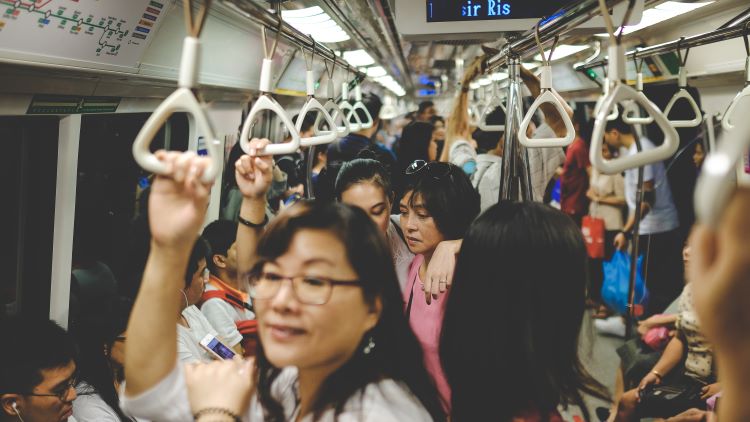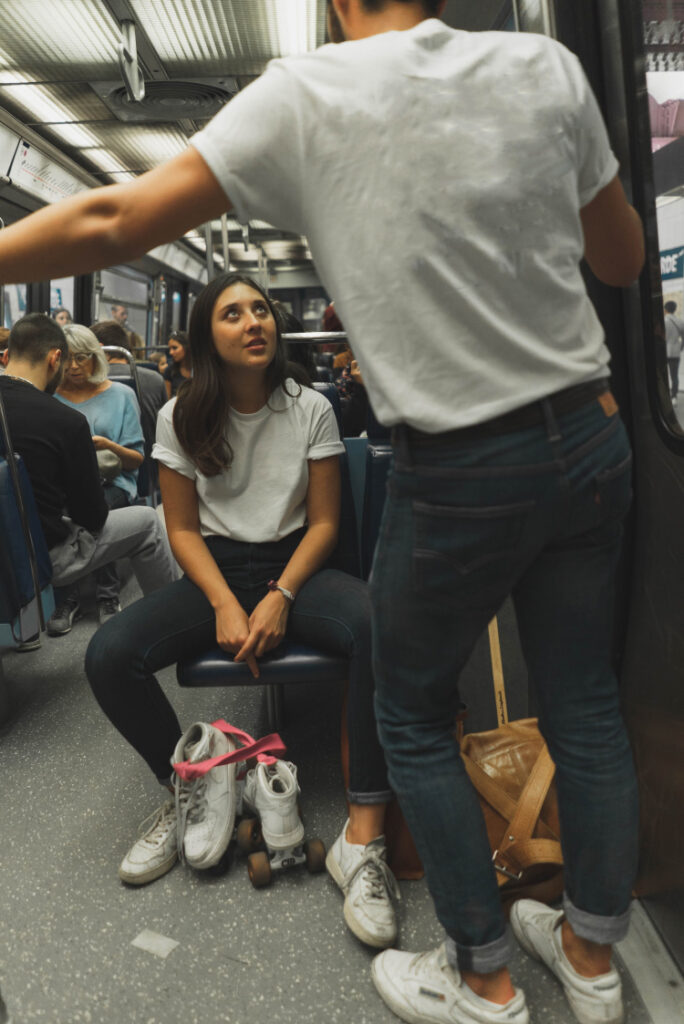Crowding Should not be the Goal of Public Transit
Laurel Skinner | November 13, 2019

Crowding isn’t just uncomfortable, it’s unsafe.
“Are you old enough to have a child?”
I looked up from my seat to see a man staring at me.
“What?” I responded.
“Are you old enough to have a child?” the man repeated.
A series of invasive and inappropriate personal questions followed. I felt incredibly uncomfortable. I wanted to leave. I wanted to run. All of the sirens in my head were going off. But where do you run when you’re on a crowded bus? When you’re on public transit you have to wait until at least the next stop. I had been excited to start using public transport more frequently, but as this was just my first week, that excitement turned into fear and propelled me back to using my car.
This experience was not as scary as some women’s experiences on public transit but it was my first negative experience. There have been countless times a female friend, acquaintance, co-worker, customer, student, or classmate has told me about being grabbed or intimidated by a guy on crowded public transit.
In 2017, Jarret Walker wrote an article for CityLab entitled, “Elon Musk Doesn’t Understand Why Mass Transit Succeeds”. He discussed an interview Musk gave for Wired, where he was critical of transit. Walker ultimately refutes Musk’s criticism. His overall message is Musk is “attacking effective transit” and says about Musk, “To be elite is to be a minority, and it makes no business sense to design transit around elite tastes”. But what exactly is Musk’s criticism of public transit?
In the Wired article Musk argues that sharing public space on transit can be uncomfortable. Is discomfort due to the presence of others really something only someone like Musk would experience? It is certainly a luxury to be able to avoid this problem, but that does not negate that it is a problem. Because as Svetla Tzvetkova found, there are many people, women, the elderly, small children, and disabled individuals, who suffer negative impacts from crowding on public transit.
The Effects of Crowding
In his article Walker says “Crowding—however much it bothers some people—is the essence of transit’s success…The unique achievement of transit is to transport so many people in so little space with so little labor.” However, multiple studies have found negative impact of crowding on transit users. Crowding complaints are usually caused by concerns listed in the table below. Some of these issues may be minor discomforts, such as bad smell. However, others such as mental health issues, robbery, injury and assault are far more serious. Some may ask “but aren’t people safer where there are more people around? Aren’t there more people to help out?”. In short, no. Because of the bystander effect, as explained by Psychology Today, people are less likely to help others in crowded areas, believing someone else will help.
Common Complaints of Crowding from the Research Literature |
| Not being able to be seated, leading to pain or discomfort |
| Less opportunity to make use of time in journey (reading, working, etc.) |
| Physical closeness to other travelers, causing stress |
| Bad smell |
| Noise and discomfort |
| Increased chance of injury and/or falling |
| Robbery |
| Sexual assault |
Sources: |
Impacts on Women
How does crowding impact women specifically? Numerous studies have all found that women are significantly more negatively impacted by fear of crime and harassment in public transit than men. This affects women’s mental well-being, physical health, social habits, economic opportunities, and is seen as a sign of gender inequalities in cities. Briscoe, et al. found that is true even for women at very young ages. It is important to also note that safety concerns surrounding public transit are more likely to influence use of public transit for women than are environmental concerns, such as decreasing one’s carbon footprint.
Increased Frequency of Service as a Solution
Numerous researchers have called for increasing the frequency of transit services as the solution to crowding. Increased frequency of service makes the work of bus drivers easier, and decreases the amount of time people are in transit making it better to use for everyone.
Some may be concerned about the costs of public transit going up with greater levels of service. The reality is, the American public transit system is underfunded, with an estimated $90 billion backlog, as established by the 2017 Infrastructure Report Card. This same report gives the system a D-. It could easily be argued that the current money being spent on transit is a waste, as the system clearly isn’t working well and isn’t serving key groups of people. Saying that public transit is only effective because of crowding conflicts with the idea of making it accessible for everyone to use.
Improved In-Vehicle Safety
There are three aspects of safety for public transit: 1) accessing transit; 2) waiting for vehicles; and 3) in-vehicle experience. Many have researched how to make public transit feel safer for everyone, especially women, and collectively have called for security cameras, better lighting, reliability of service, perceived availability of staff/police, spatial and technical accessibility, spatial visibility, having help points, easy to see safety measures, press relations, and “mastery of network” (understanding the area one is in and the route they are taking so as to not get lost). Suman and Bolia also found that providing separate spaces in-vehicle for women, also increase safety. However, men will enter women-only cars despite their designation. Therefore, decreasing crowding is a better solution.

Those Most Threatened by Crowding are the Majority, not a Minority
Decreasing crowding is a problem for all individuals, but especially women, the elderly, children and the disabled. As Briscoe, et al. established, these groups are far more likely than men to use public transit. This make them the majority. As Walker says: “Instead of doing exactly what you want, an efficient mass transit network is designed to do most of what thousands of people want”. Given Walker’s dismissal of elite tastes because they represent the minority, and his admonition to consider the masses, shouldn’t he also support alleviation from crowding in public transit?
As Fu and Juan established when looking at public transit, behaviors and behavioral intents are impacted by attitudes, subjective norms, satisfaction, and habits. For public transit this means focusing on making it convenient, comfortable, and move relevant to this discussion of safety. This is important because in order for public transit to work, it needs to be a behavior that is chosen by individuals.
Walker presents a choice to use public transit as is and Musk presents a choice that efficiently would continue the cycle of individual automobile use. However, there is a third choice, effectively using the aforementioned strategies to adapt transit into a safe haven for everyone.

Laurel Skinner is a third year Masters of Landscape Architecture student at Cal Poly Pomona. Her undergraduate background and main interest is public health. She hopes to pursue ventures where she can look at the relationship between Landscape Architecture and public health.